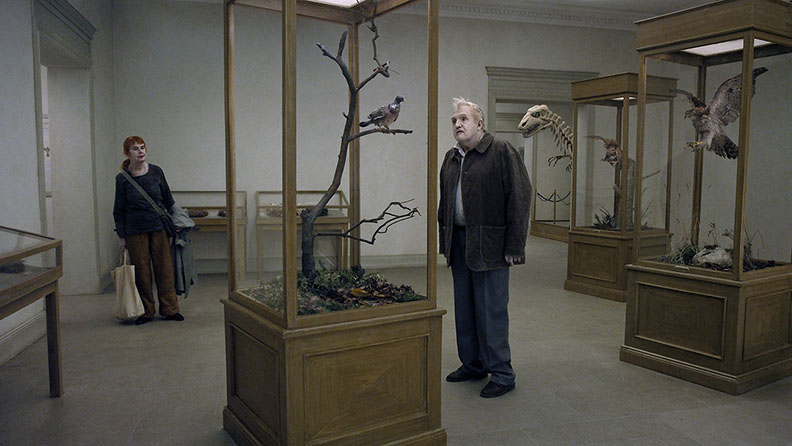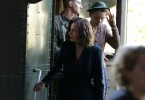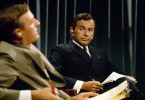A Pigeon Sat on a Branch Reflecting on Existence
Director: Roy Andersson
7:30 p.m. Thursday
Oklahoma City Museum of Art
B
Often produced almost decades apart, Roy Andersson’s films trace subjects that should be difficult to contain. Still, the Swedish filmmaker manages to frame life in a darkly humorous and captivating way that readily tackles the nature of being. As the final installment in an existential trilogy, A Pigeon Sat on a Branch Reflecting on Existence takes some endurance to get into but is endlessly satisfying once given the chance.
A Pigeon has little interest in retaining a clear-cut narrative, with only one identifiable thread throughout. Jonathan (Holger Andersson) and Sam (Nils Westblom), a pair of novelty salesman, struggle desperately to collect payment on their peculiar wares. Their efforts are largely presented in a style reminiscent of classic sketch comedies — Monty Python’s The Meaning of Life, in particular. But unlike Terry Gilliam and Terry Jones’ work, A Pigeon takes much more somber and cleaner care of its content. The framing is consistently idle, and scenes only go dark when transitioning between scenes or when the occasional title card provides a break from the steady prescription of absurdist episodes.
Each of these odd instances illustrates an ultimately grim and quirky facet of the human condition. In one shot, a food server and a few emergency workers debate over what to do with the paid lunch of a patron who suffered a spontaneous, fatal heart attack. After much deliberation, they opt to give his order to whoever volunteers first, which occurs in a matter of seconds. In Andersson’s world, commodities and comfort often take priority over human life.
A sense of anachronism often emerges, like a scene where Charles XII entering a populated pub with both his personal guard and battle regalia in tow, or when a woman demands passionate kisses as payment for her selection of liquor, all to the tune of “The Battle Hymn of the Republic.” Andersson takes inspiration from a 16th-century painting by Pieter Bruegel, never concerning himself with any notion time. While the episode involving the monarch is jarring, there’s no set chronology to speak of; much of A Pigeon spans several decades, if not an entire century.
Though it’s easy to chuckle at the deadpan performances, much of its power is in the way it’s filmed. Still and unyielding shots encourage viewers to absorb each scene like a museum exhibition, as if they were animated portraits of life. Minimal onscreen motion draws attention on the scenery — kind of like Norway’s concept of Slow TV, where hours of footage encourage viewers to attach stories to what’s happening in front of them. Fortunately, this process is never as dull in A Pigeon.
Highly saturated and bright colors are prevalent throughout, which is closer to the illustrated aesthetic by which Andersson is inspired. There is a constant backdrop of dingy gray clashing with the pale characters’ ghostlike skin, and characters grow more and more lifeless as the film carries on. It sounds terrifying, but it’s actually quite beautiful when executed effectively.
As was once the case with Terrence Malik, a Roy Andersson film is a subtle event, and A Pigeon is no exception; within a few minutes, you realize how soothing an awkward, muffled chuckle and a pair of extra-long vampire fangs can be.





